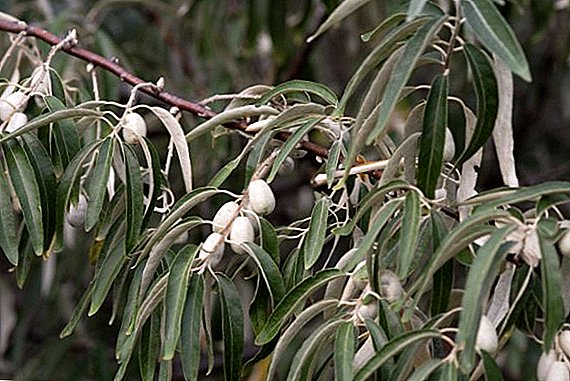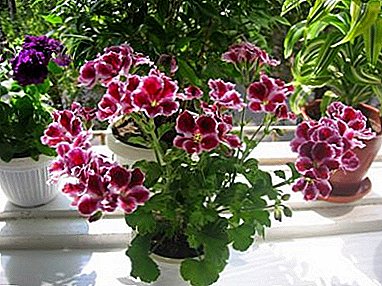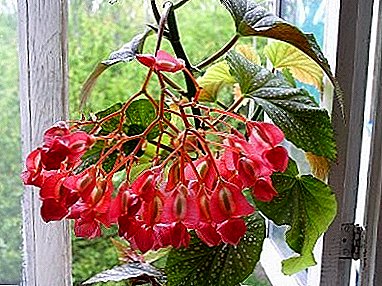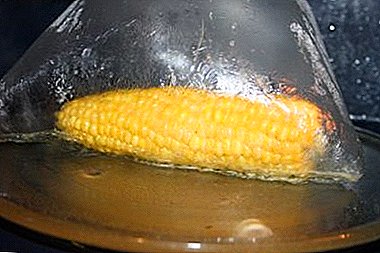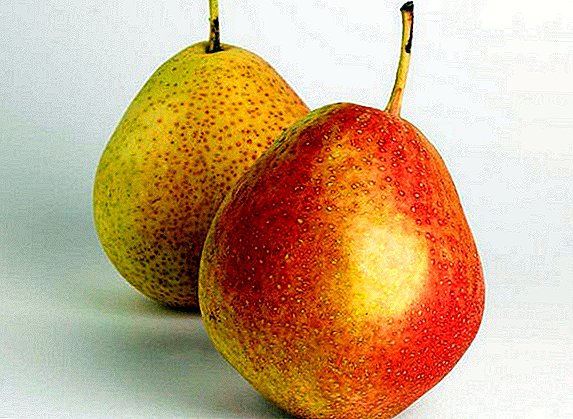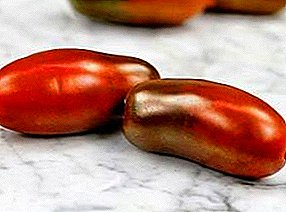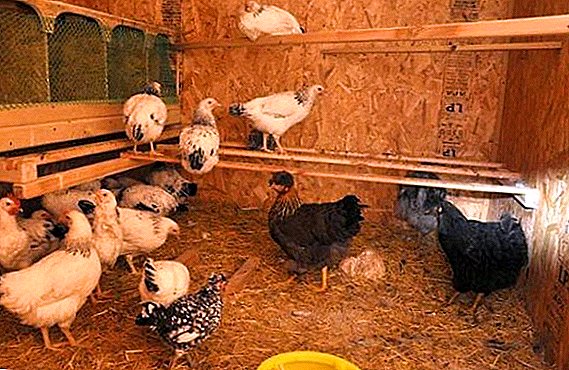 Poultry often does not tolerate prolonged temperature drops and in most cases requires a solid home for a safe winter. Therefore, no farmer can do without a quality warm and heated chicken coop. However, not all methods of heating homes for domestic chickens are effective. Therefore, in this article we decided to describe in detail the most popular of them, as well as to determine their main advantages and disadvantages.
Poultry often does not tolerate prolonged temperature drops and in most cases requires a solid home for a safe winter. Therefore, no farmer can do without a quality warm and heated chicken coop. However, not all methods of heating homes for domestic chickens are effective. Therefore, in this article we decided to describe in detail the most popular of them, as well as to determine their main advantages and disadvantages.
Can I do without additional heating?
In most cases, additional heating is the only way to ensure the most optimal conditions for keeping chickens. This issue is particularly acute for regions with a cold northern climate, as in such conditions, when there is a lack of heat, the bird can become seriously ill, or even die.

But in a temperate climate and the rest, warmer climatic zones, the coop does not require additional heating, since natural heating for these birds will be quite enough. To do this, it is only necessary to provide high-calorie food to chickens.
Important! Extruded polystyrene should not be used as insulation for the coop. This material is not able to pass excess steam through its surface, leading to excessive moisture in the chicken coop.
But in order for the birds to feel comfortable, you should thoroughly warm the chicken coop. To do this, all the cracks need to be carefully caulked, leaving only a small ventilation hole. In addition, the walls, floor and roof require enhanced insulation. The walls and roof are made double, with a small cavity between the inner and outer parts of the structures. Heater should be laid in the cavity (foam plastic, mineral wool, etc.) at least 10-15 cm thick. The floor is also made double. An additional heat-insulating ball with a minimum thickness of 15 cm must be laid on top of the main coating. Peat, sawdust or straw will be the most suitable for these purposes.

In the end result, the design of the insulated coop should resemble a thermos. The heat released during the life of the birds becomes the main source of creating a favorable temperature in the room, which, thanks to the heat insulation ball, is retained for a long time. In this case, a warmed chicken coop enables the birds to safely withstand seasonal frosts down to -10-12 ° С.
We recommend to get acquainted with the breeds of chickens: Hisex, Hubbard, Maran, Amroks, Master Gray.
How to heat a chicken coop with electric heaters
Often, for most farmers, natural heating of the coop becomes insufficient to create comfortable conditions for wintering for domestic chickens. In this case, the safest and fastest way to achieve the required microclimate for keeping birds is space heating with a variety of electrical devices. They provide an opportunity instantly, and most importantly, it is safe to achieve the desired temperature. Next, we consider the main advantages and disadvantages of the most popular types of electric heaters.
Find out why ventilation is needed in the hen house
Heater
The electric heater is a ventilation circulation type heating device. The device contains a heating element (PETN) and an air circulation system. Under the action of electric current, the heating element is heated, which, with the help of a powerful fan, is heated by air. As a result, with the help of a constant circulation of heat, the room is gradually heated to the required level.

Such a system is one of the most optimal solutions for heating, as it contributes to the instantaneous heating of air. To equip the system, it is necessary to bring uninterrupted power supply to the room, and also to build a special air duct from metal pipes or other materials. Most often, air heaters are used to heat large rooms, as the system requires complex maintenance.
Advantages of heaters:
- high level of efficiency;
- rapid heating of the room;
- uniform heating of the whole chicken coop.

Disadvantages of calorific heating:
- high price of the heating system;
- the need to install complex ventilation equipment;
- during the work the heater can emit an unpleasant smell;
- overdrying of air in the process of heating;
- after the heating is turned off, the room instantly cools down;
- high noise level.
Did you know? The first model of calorific heating was constructed at the beginning of the 19th century by Russian engineer Nikolai Ammosov. In 1835, the so-called "Ammos oven" was first tested to heat the Imperial Academy of Arts.
Oil heater
The oil heater is an electric device consisting of a heating element and a special heat carrier — mineral oil, which are sharpened in a sealed metal housing. In appearance, the oil heater resembles a conventional battery, but unlike centralized heating, such a radiator does not have a stationary location.

To design a heating system based on oil heaters, it is only necessary to conduct uninterrupted power supply to the room and purchase the required number of heaters (depending on the square of the room).
Advantages of oil heaters:
- low power consumption;
- high fire safety;
- durability of heaters;
- lack of noise;
- the heater does not dry out the air and does not emit unpleasant odors;
- cooling of the room occurs gradually.

Disadvantages of oil heaters:
- slow and uneven heating of the room;
- for heating large chicken coops will require several devices;
- in case of depressurization, oil may leak out;
- large weight of the heater.
Learn how to choose a chicken coop, make it yourself, equip a comfortable nest and roost for a laying hen.
Electric convector
An electric convector is a heating device that heats the room by natural convection of air between the room and the heating element. The convector consists of a metal body and PETN. During operation of the device, the heated air from the special air chambers rises, while the lower, colder air is sucked into them. As a result, there is a natural circulation of heat in the room.

To design a heating system based on electric convectors, it is necessary to provide the chicken house with uninterrupted power supply, as well as to purchase the required number of appliances (depending on the square of the room).
Advantages of electric convectors:
- low power consumption;
- low cost;
- ease of operation;
- lack of noise and an unpleasant smell in operating time;
- the heater does not dry out the air.

Disadvantages of electroconvectors:
- slow and uneven heating of the room;
- instant cooling of the room after turning off the device;
- for heating large chicken coops will require several convectors.
Did you know? The domestication of wild hens took place on the territory of Ancient China and Southeast Asia in the 6th millennium BC.
Ceramic panel
Ceramic heating panel is a device consisting of heating heater and ceramic plates, which play the role of intermediate coolant. The device operates according to the principle of electric convector, however, the heating of the air in the room is due to forced convection. For these purposes, powerful fans are provided in the ceramic panels. Designing a heating system based on ceramic heaters is a fairly simple process, since its installation will require only uninterrupted power supply, as well as the availability of the heaters themselves.

Advantages of ceramic panels:
- fast warming up of the room;
- aesthetics of the device;
- high fire safety of the heater;
- long service life;
- Do not dry the air.
The disadvantages of ceramic panels:
- high price;
- significant power consumption;
- high noise level during operation.
Did you know? The first electric heater was created in the 1930s by the French experimenter Jacques Noirte.
Infrared heater
The operation of infrared heaters is based on the principle of interaction of organisms with electromagnetic radiation, which occupies a spectral position between microwave radiation and red visible light, the so-called infrared radiation. Infrared heater is quite simple in the design of the device. It consists of a housing, an infrared emitter and a reflector made of aluminum. To heat the chicken coop with such a device, it is only necessary to supply power to the structure, as well as to purchase the required number of heaters.

Advantages of infrared heater:
- low power consumption;
- does not overdry air;
- the device runs silently;
- the device instantly creates the necessary microclimate.
Disadvantages of infrared heaters:
- point heating of the room;
- fragility of the device;
- the need for additional interior parts in the room, as the heater heats the objects, not the air;
- the device emits light, which at night can disturb the sleep of a bird.
- to maintain the optimum temperature requires uninterrupted operation of the device.
Important! When buying infrared heaters beware of devices with shortwave radiation, as they can cause heat stroke in birds. Pay attention to devices with medium or long wavelength radiation.
Is it possible to do without electricians
An alternative to electric heaters are traditional gas and stove heating systems for our region. Each of them has its advantages, disadvantages and conditions for rational use, however, in any case, such heating of the room will help to cope with any sudden drop in temperature.
Using the stove
A conventional heating stove is the easiest way to heat a chicken coop, regardless of the climatic conditions of the region. This heating system consists of a metal combustion chamber (boiler) and a chimney. In the process of fuel combustion, heat is generated, which heats the surrounding air through the walls of the stove.

Such a heating system is quite practical. It does not require additional costs for maintenance, and absolutely any non-toxic material can become fuel for it. However, to build heating with the help of the stove is not so simple. In addition to the boiler and the ventilation pipe, the system requires strict adherence to all fire safety standards, since the stove makes it possible to heat it with an almost open flame.
Advantages of the stove:
- low cost;
- low fuel costs;
- practicality and ease of care;
- ease of installation of the heating system.

Disadvantages of the stove:
- low fire safety;
- fuel needs to be thrown independently;
- emits an unpleasant smell in the process.
We advise you to read how to keep such breeds of chickens: Loman Brown, Cochinhin, Sussex, Orpington, Minorca, Dominant, Black Bearded, Russian White, Faverol, Andalusian, Wyandot.
Heating the coop with gas
Gas heating is the most efficient way to create the required temperature in the hen house. Gas heating system can be of two types: water and convector. Water is a chain of the boiler, heating elements and the system of removal of combustible gases. In the process of fuel combustion, heat is generated, which is used to heat water.

Circulating through the system, water gives up its heat to the batteries, which directly heat the room. Convector heating is a system of point heating elements - convectors. They function according to the type of electric convectors, however, the heating of the heating element takes place with the help of gas combustion in the hermetic chamber of the device.
Important! Gas heating is equipped only in the case of a farm that has at least several hundred heads of chickens. For household purposes, such heating is an inappropriate waste of funds.
Advantages of gas heating systems:
- fast warming up of the room;
- energy efficiency;
- high fire safety;
- no odor in the process of burning fuel.

Disadvantages of gas heating systems:
- high cost of equipment;
- the need for continuous monitoring of the health of the gas supply system;
- high cost of fuel.
Read also about the rocks Brahma, Leggorn, Poltava, Kuchinsky Jubilee, Adler silver, Zagorsk salmon, Rhode Island, Redbro.
Heating a chicken coop is one of the most important processes in the care and breeding of poultry. Optimum climatic conditions for chickens throughout the year are the key to their good health and high egg production. This process should be approached as carefully as possible, since it directly affects the farmers' value of each individual in the farm. Therefore, the choice of an optimal heating system should occur not only on the basis of personal preferences, but also according to the efficiency and feasibility of the funds spent on it.
Reviews from the Internet





